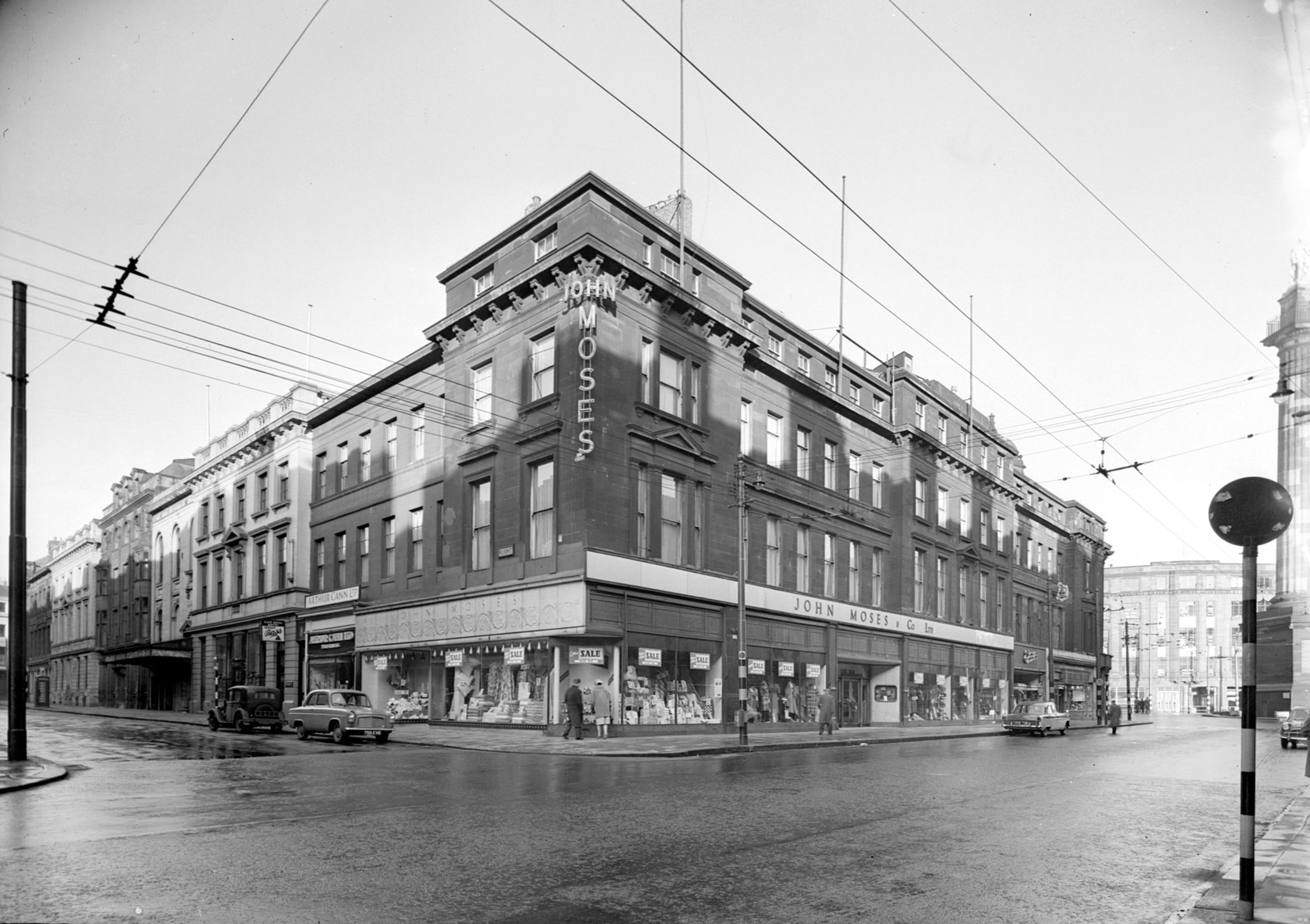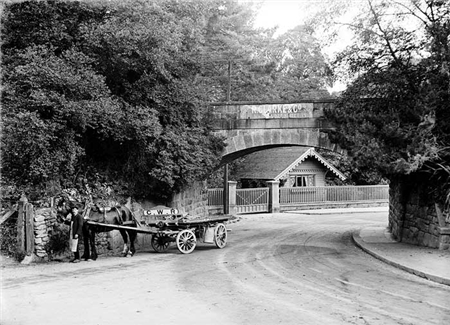On 22 January 1917, all three occupants of 45 Hotspur Street were sent to jail for a remarkable spree of shoplifting and petty crime. The three residents were John Butt (59), a labourer with the gas company, Annie Garvie (26) a dressmaker and Butt’s step-daughter and Arthur James Martin (45) a warehouseman.
The Butt family
John Adolphus Butt was born around 1856 in St Peterport, Guernsey, the son of Nicholas and Harriet. By the age of 15 he was already working as a carpenter and went on to become a ships carpenter, a highly skilled and well respected profession. Around 1875, he married Anne Mansell from Cornwall, who already had a daughter, Edith Agnes, from a previous relationship. The 1881 census records John as aged 25, Anne aged 27 and two daughters Edith Agnes, under 6 years and Florence, under 4 years. The couple went on to have a third daughter, Anne around 1883, born in Alderney, another Channel Island.
In about 1897, the family moved to Newcastle and the 1901 census shows the couple living at 25 Claremont Road, with all three daughters, Edith Agnes (23), Florence (21) and Anne (18), none of whom were working, and a visitor, Arthur James Martin (28), a warehouseman from Essex. Interestingly, Anne, who in 1881 was recorded as two years older than John is now three years younger than him!
John was working as a labourer for the gas company, a significant change in fortune from his previous profession. As a ships carpenter, he would have had a long apprenticeship to become a skilled journeyman. Of course in the late 19th Century, the rapid shift to metal-hulled, steam-powered ships led to a huge reduction in demand for these skills, which possibly explains the move to Newcastle and the shift to unskilled work.
By 1911, the family were living at 165 Warwick Street along with Arthur Martin, now a permanent lodger and working as a carter, or rolleyman for the railway. One of their three daughters was recorded as having died and the other two had left home. Interestingly, John’s wife of 30 years was now listed as Caroline Butt and was some eight years older than him!
None of which gives us any clue as to the crime spree of 1916/17 or indeed who Annie Garvie was.
Caught red-handed
At around 3.30 on 6th January 1917, there was a sale at John Moses and Company, Drapers in Grainger Street. The shop was crowded, when Detective Sergeant Donohoe noticed Annie Garvie and another woman behaving suspiciously. Annie took a scarf from a counter, valued at 2 shillings, and pushed it under her coat. When she spotted the detective, she pulled the scarf out and threw it over the heads of the other customers. The other woman, believed to be her mother, absconded. When arrested, Annie said ‘Give me a chance and I won’t come back to this shop’.

The big surprise came when Detective Sergeant Donohoe and Detective Trotter visited the upstairs flat in Hotspur Street. When they eventually got into the sparsely furnished flat, they found an enormous quantity of new goods. The list of which ran to 21/2 foolscap sheets. It included:
16 umbrellas
8 clocks
56 blouses
17 knives and 8 forks stolen from Beavans in Shields Road
A necklace valued at £2 12s 6d from H Dealey & Co of Northumberland Street
21 pairs of woollen combinations
60 tablets of soap
10 pairs of scissors
Bottles of whisky
24 ladies’ belts
29 pairs of ladies’ stockings
23 pairs of boots and shoes
17 bottles of perfume
18 white embroidered tablecloths
14 cushion covers
Gloves
Mufflers
Braces
8 handbags
Various articles of jewellery
Not only did they find a huge haul of goods, but they also found £50 10s in gold, £8 7s in silver, £22 10s in treasury notes and papers showing that Garvie had £57 invested in a building society and Martin had £500 in savings, more than enough to buy a house, at a time when average earnings were £1-2 per week. The bank books showed that the money had been saved over the previous 12 months.
Collateral damage
Amazingly, the raid on 45 Hotspur Street showed that Annie was not the only thief. Arthur Martin had been jailed for a month in June of 1916 having stolen two shoulders of bacon, worth £1 11s, from the Forth Banks Goods Station of the North East Railway, where he was employed as a rolleyman. The raid showed that he hadn’t learnt his lesson.

Forth Banks Station was immediately to the west of King Edward bridge in the area now occupied by the Metro Radio Arena. (Some remains of the old station can still be seen when traveling north on the Redheugh Bridge.) The railways brought the first easy means of moving goods around the country, but they also brought with them a huge logistical problem. Imagine a train load of goods leaving Newcastle and heading south. Some may be heading to London, others to Leeds, Lincoln, Norwich or Bristol and multiple small intermediate stations between them. In some cases a whole truck load of goods might be heading to a single station, in others maybe a single shoulder of bacon. At every station on its route, the train would need to stop. Some trucks would be removed and added to other trains, heading say southwest. Other trucks would be added. For smaller cargoes, the problem was even worse as the contents of a single wagon would need to be divided between multiple trains.
As a result, goods stations were enormous enterprises, employing large numbers of staff and needing to keep goods, particularly perishable ones, moving. The railways also employed their own carters to deliver the goods direct from the station to the stores and companies who had ordered them. The standard four wheel horse drawn cart was known as a rolley and the men who operated them were rolleymen.

So large was the enterprise that it’s hardly surprising that theft or loss of goods was a major problem for the railways which, from the early days, employed their own police.
It was the North East Railway Police who prosecuted Arthur Martin, having discovered in the raid of 45 Hotspur Street a haul of goods stolen from the railway, including sweaters consigned to the Co-operative Wholesale Society, 12 bottles of whisky consigned to Bradford Bros, a pair of boots consigned to Jackson’s Clayton Street and miscellaneous other goods.
The outcome
The bench found that John Butt, the only one of the three to plead not guilty was largely innocent. He was described as being of a simple nature and was only implicated by being the tenant of the property. He was sentenced to three months in jail, Arthur Martin was sentenced to 12 months and Annie Garvie to nine months.
But who was Annie Garvie?
Annie Garvie, also known as Annie Craig, was evidently also known locally as Sylvia Dashwood. None of which names I’ve been able to find in census or other records. She describes herself as John Butt’s step-daughter, although his only known step daughter was Edith Agnes Mansell, who would have been 39 at the time.
Not only that, but what became of Annie’s mother, who absconded at the time of the theft on Moses’ store, or of John’s wife Anne (or Caroline).
Interestingly, the newspaper article states that John had taken the flat in the name of John Garvie. Was he running away from unpaid debts in the previous property and so using a different name, or had he taken up with a new partner, who was Annie’s absconding mother?
What little we do know of Annie is that she had previously been convicted for shoplifting nine years previously and bound over to keep the peace. Although 17 at the time, she gave her age as 26. She had since married and moved to Sunderland, but her husband had left her, so she returned to Newcastle.
Alternatively, could Annie be John’s youngest daughter, Anne, who would have been around 36 at the time of the crime?
We may never know, but we can be certain that, for a time, she was a prodigiously successful shoplifter!
Acknowledgements
Researched and written by Michael Proctor, Heaton History Group, for our ‘Shakespeare Streets’ project, for which we are looking at the stories of people, places and events relating to the streets in Heaton with names relating to William Shakespeare.
Can you help?
If you have any more information, memories about or photos of anybody mentioned in this article or anything which might interest our readers relating to Bolingbroke, Hotspur, Malcolm, Mowbray or Warwick Streets or any of the Stratfords (Grove, Grove Terrace, Grove West, Road or Villas) or Heaton Park Road, which was originally going to be called Shakespeare Road, please either leave a message on this site by clicking on the link immediately below the title of this article or email chris.jackson@heatonhistorygroup.org
